A graph plotted between versus for calculating activation energy is shown by

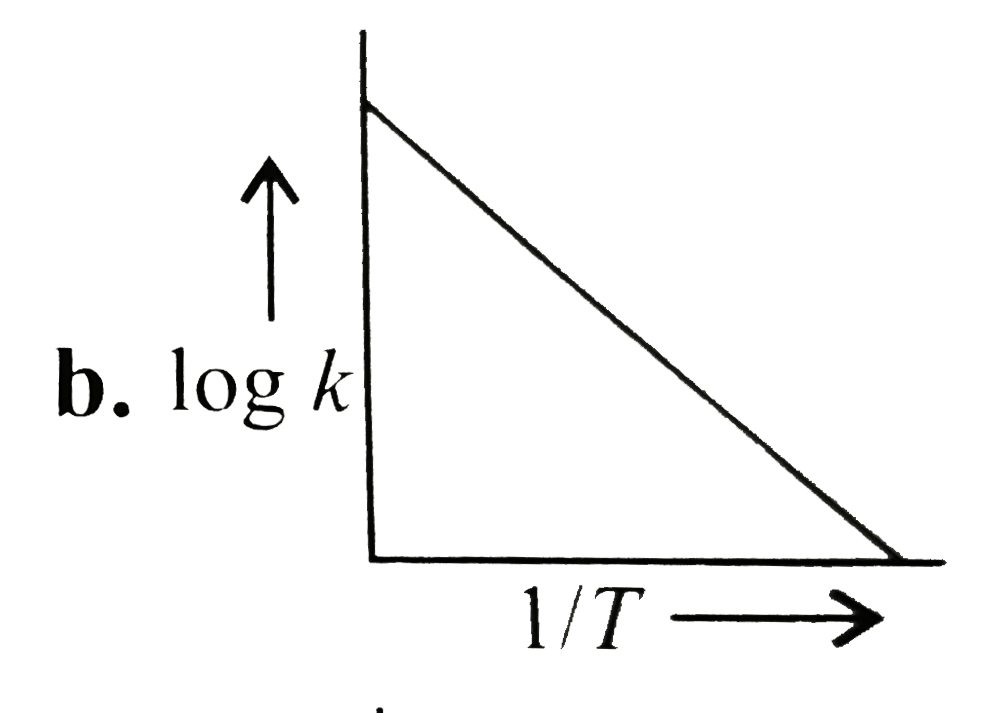


The correct Answer is:B
To determine the correct graph for the relationship between logk and 1T as described by the Arrhenius equation, we can follow these steps:
Step 1: Understand the Arrhenius Equation
The Arrhenius equation relates the rate constant k to the temperature T and is given by:
k=Ae−EART
where:
- k = rate constant
- A = pre-exponential factor (frequency factor)
- EA = activation energy
- R = universal gas constant
- T = absolute temperature in Kelvin
Step 2: Take the Logarithm of the Arrhenius Equation
Taking the logarithm of both sides, we get:
logk=logA−EA2.303R⋅1T
This can be rearranged to:
logk=−EA2.303R⋅1T+logA
Step 3: Identify the Linear Form
The equation is now in the form of a straight line y=mx+c, where:
- y=logk
- m=−EA2.303R (the slope)
- x=1T
- c=logA (the y-intercept)
Step 4: Analyze the Slope
Since the slope m is negative (because EA is always positive), this indicates that as 1T increases (which means temperature T decreases), logk will decrease.
Step 5: Determine the Correct Graph
From the analysis, we expect the graph of logk versus 1T to be a straight line with a negative slope. Therefore, the correct graph should show a downward trend as 1T increases.
Conclusion
Based on the above analysis, the correct answer is Option B, which represents a straight line with a negative slope.
---
The Arrhenius equation relates the rate constant k to the temperature T and is given by:
k=Ae−EART
where:
- k = rate constant
- A = pre-exponential factor (frequency factor)
- EA = activation energy
- R = universal gas constant
- T = absolute temperature in Kelvin
Taking the logarithm of both sides, we get:
logk=logA−EA2.303R⋅1T
This can be rearranged to:
logk=−EA2.303R⋅1T+logA
The equation is now in the form of a straight line y=mx+c, where:
- y=logk
- m=−EA2.303R (the slope)
- x=1T
- c=logA (the y-intercept)
Since the slope m is negative (because EA is always positive), this indicates that as 1T increases (which means temperature T decreases), logk will decrease.
From the analysis, we expect the graph of logk versus 1T to be a straight line with a negative slope. Therefore, the correct graph should show a downward trend as 1T increases.
Based on the above analysis, the correct answer is Option B, which represents a straight line with a negative slope.
Topper's Solved these Questions
- CHEMICAL KINETICSBOOK - CENGAGE CHEMISTRYCHAPTER - CHEMICAL KINETICSEXERCISE - Exercises Assertion-Reasoning
22 Videos
- CHEMICAL KINETICSBOOK - CENGAGE CHEMISTRYCHAPTER - CHEMICAL KINETICSEXERCISE - Exercises Integer
15 Videos
- CHEMICAL KINETICSBOOK - CENGAGE CHEMISTRYCHAPTER - CHEMICAL KINETICSEXERCISE - Exercises Multiple Correct
34 Videos
- CARBOXYLIC ACIDS AND THEIR DERIVATIVESBOOK - CENGAGE CHEMISTRYCHAPTER - CARBOXYLIC ACIDS AND THEIR DERIVATIVESEXERCISE - Exercises Archives (Analytical And Descriptive)
34 Videos
- COORDINATION COMPOUNDSBOOK - CENGAGE CHEMISTRYCHAPTER - COORDINATION COMPOUNDSEXERCISE - Archives Subjective
18 Videos
Similar Questions
The graph between logk versus 1/T is a straight line.
View Solutioni) Write the mathematics expressions relating the variation of the rate constant of a reaction with temperatures.
ii) How can you graphically find the activation energy of the reaction from the above expression?
iii) The slope of the line in the graph of log k(k=rate constant) versus 1/T is −5841. Calculate the activation energy of the reaction.
View Solution
Knowledge Check
A graph plotted between logk versus 1/T for calculating activation energy is shown by
A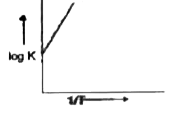 B
B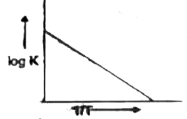 C
C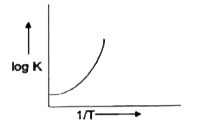 D
D
A graph is ploted between log K virsus 1T for calculation of activation energy (Ea). The correct plot is
A B
B C
C D
D
A graph plotted between log k vs 1T is represented by
A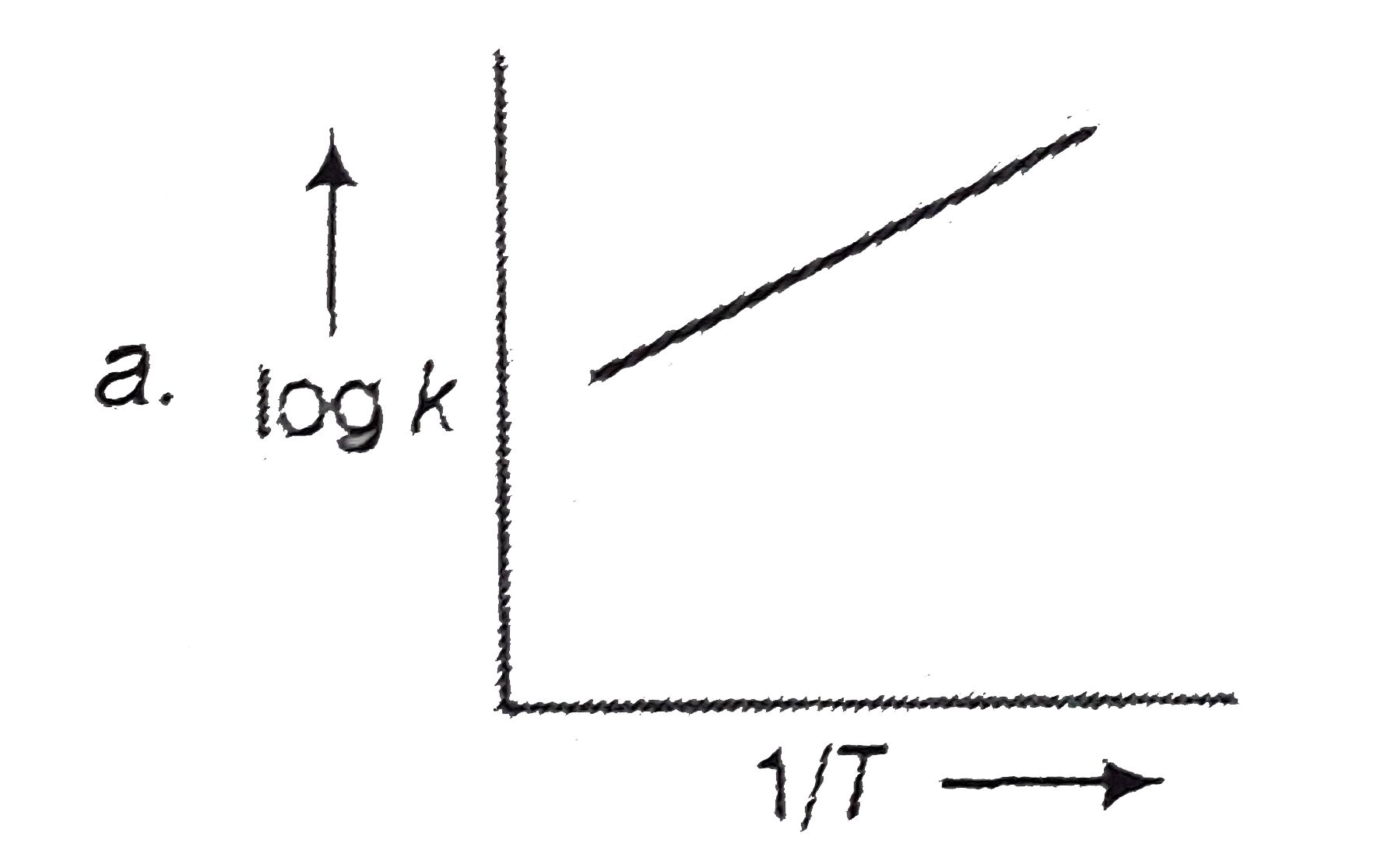 B
B C
C D
D
The graph plotted between concentration versus time

View SolutionThe plot og logk vs 1/T helps to calculate
View SolutionThe plot of log k vs 1/T helps to calculate
View SolutionThe slope of straight line graph between ln k us 1T is equal to 2.4×104K. Calculate the activation energy of the reaction at 400 K. (K represents rate constant)
View SolutionIf a graph is plotted between ln k and 1/T for the first order reaction, the slope of the straight line so obtained is given by
View Solution
